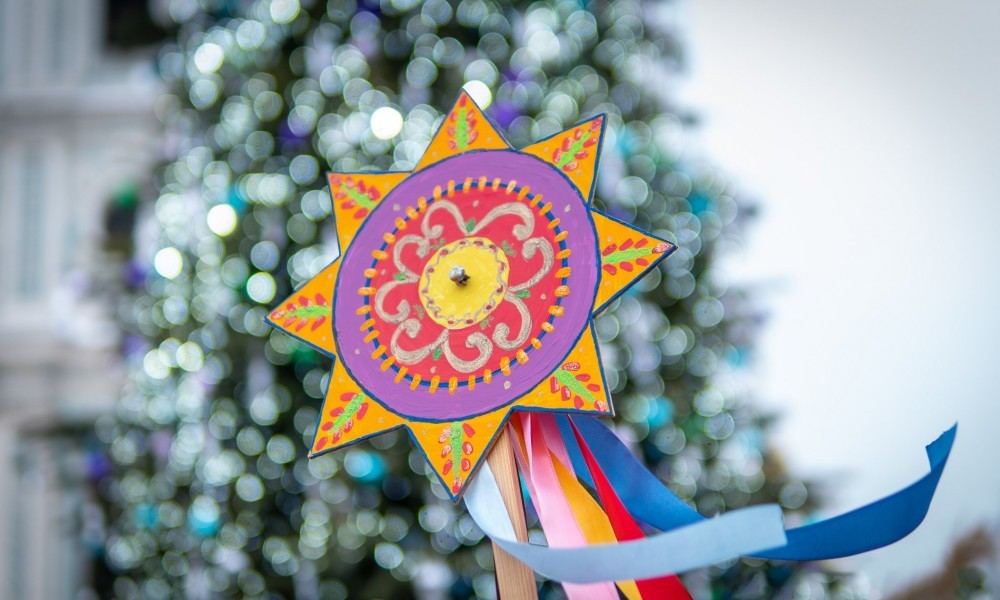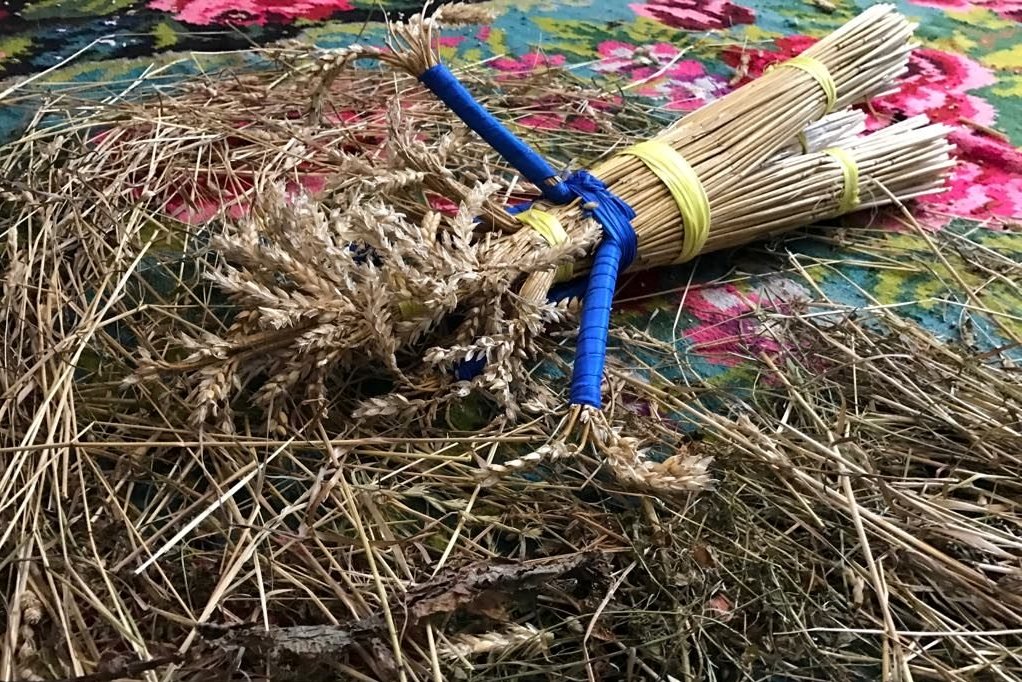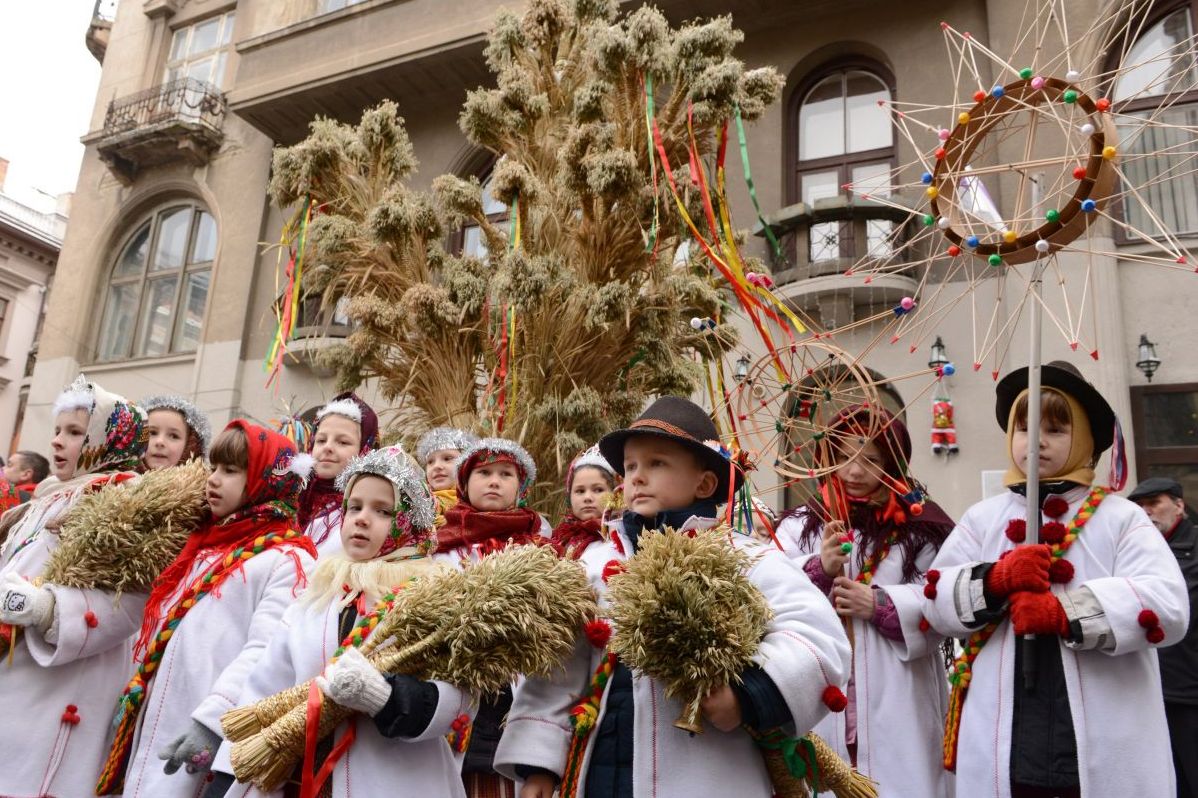Malanka and Vasyl winter fun: Carnival in Ukrainian style

Taking the side of the light forces, the agile peasants did not forget to profit from the universal battle.
By 1918, Ukrainians were celebrating the New Year by the Julian calendar. On December thirty-first, prayers were offered in the temples to the Saint Melania the Younger, and on January 1, the Orthodox world honored the memory of Archbishop Basil of Caesarea, one of the three Fathers of the Church. After the introduction of the Gregorian calendar, the holiday dates shifted fourteen days in advance. The birthday of Malanka fell on Generous evening, and Вasil's day turned into the Old New Year.
Сommon people, far from theological strife, honored Basil and Melania not in the ecclesiastical canons, but the grunts of priests passed by their ears. The images of the saints were mixed with the remnants of paganism: Basil took over the features of the solar gods, and Malanka identified with the goddess of the moon, who was in charge of family affairs and the sacrament of birth. It is no coincidence that in the villages under Generous evening children with hotels were sent to the midwifery, the girls were guessing at the grooms. The wedding on Malanka's day heralded peace and love for the newlyweds.Photo rukotvory.com.ua
Carnival walking during the winter solstice was common to all Indo-Europeans. In each village, a group of young unmarried men gathered together. The most lively guy was dressed as Malanka - they tied a sheet and an apron on top of the harem pants, whitened and blushed their faces, raised their eyebrows, and tied long hair with a coat of wool and a thong to the hat. The "Beauty Girl" was accompanied by a motley company: Grandpa and Grandma, Plowman, Gypsies, Goat, Bear, Bootlegger, Soldier and a whole plow of shrewd devils. The tall young man was assigned the role of Crane, and the youngest became a Cat and was begging for a feast.
Blushing with laughter, they hid funny wooden masks. Young people depicting animals dressed in fur pants and casing inside out, with a rag tail made of rags. Bears in Bukovyna had to wear huge straw wings, decorated with colored ribbons and necklaces, behind their backs. In the steppe regions where wood was scarce, the faces were painted with soot and white clay, and the goat's face was made of willow. A split at the leading edge meant horns wrapped with cloth and hung on the sides of a spoon-ear. The thin end of the branch was passed between the horns to let the hoop come out. Photo prm.ua
Photo prm.ua
At the Malanka's girls company a mischievous and cheerful bride named Basil appeared, a smart and sharp-tongued girl dressed in a man's suit. Singers did not go to their homes: only men were allowed to cross the threshold of another's house on Generous Evening and Basil's day.
The youth, singing and dancing, wandered the streets, threw passers-by with snowballs, and arranged for neighbors to stumble. It was considered commonplace to lift the gate from the curtain or to fill the ashes on the threshold. The short daylight was associated with the rampant primordial chaos that engulfed the sun, so any tricks were allowed for the holidays. In a riot of elements, a new world order was born, but as long as the essence in its right, all rules are abolished, and between the worlds there is a gap through which foreign guests can penetrate.
The villagers were glad to enlist the support of the secret forces and were not indignant when Malanka ordered the oven and scattered kitchen utensils, and her companions were laying in the house a pandemonium. The devils grimaced and chased after children. The gypsy was guessing at the cards, the Bear roared and danced to the ground. Crane beat the tambourine, Grandpa and Grandma used to make funny fights, and Bootlegger played with the hostess. The culmination of the program were the dramatized acts in which a common motive for the death and resurrection of the sacrificial animal associated with the cult of fertility was noticeable. In one of the rite songs, the wicked Cossack kills a goat with a shot in the heart, but good people persuade God to revive her. The rescued Goat brings God's blessing to the world: where it goes, it gives good bread. Towards the end, Plowman drew a circle around the house, crossing the path with starvation, disease and sorcery.
The totem animal was also played by a pig, a close relative of the golden boar Gullinbursti, which was visited by the Scandinavian god summer Freyr. Even poor families at the head of the table sported a "Caesarian pig", roasted whole. The bones collected after the meal were buried in the field, on the beds and in the barn to be harvested and bred by autumn. The festive cycle ended with a sowing rite conducted by boys between the ages of seven and fourteen. The room was strewn with grains of rye, wheat, oats and peas, wishing the owners happiness, health and wealth. In the old days, they believed that good wishes would sprout into the future. Photo politeka.net
Photo politeka.net
Nowadays, Generous Evening and Old New Year can be celebrated in the city park, where folk ensembles with animators perform. The most colorful festivities, which have not lost the immediacy and juicy folk humor, take place in Vashkivtsi and Krasnoyilsk village in Chernivtsi region. When matching Malanka to Basil, the locals arrange an incredible carnival "Perebériia", which involves top-notch characters - police, bandits, politicians and pop idols.
The results of the season are summed up in Chernivtsi at the "Malanka Fest" ethno festival, choosing the best troupe of the year. Teams of different cities and villages parade through the city, showing the audience their enthusiasm. The skill of folk craftsmen deserves no less admiration: the colorful costumes of lightning rods are made by hand. Living tradition does not close in the past, it is created in our eyes and looks to the future with hope.
Cover photo nashkiev.ua





















